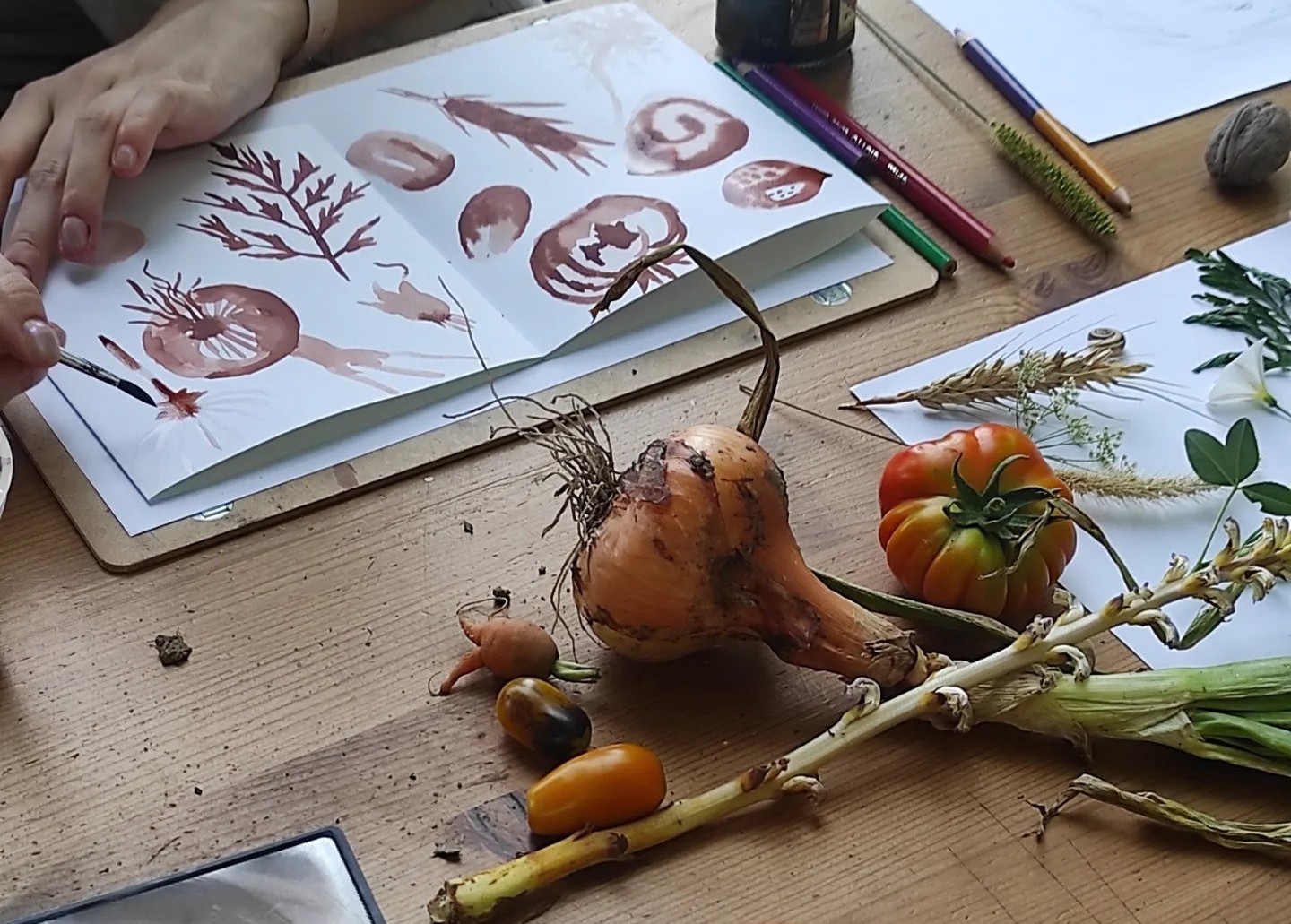Why use a Drawing Workshop?
Drawing in Nature workshops provide an opportunity for participants to engage deeply with their environment through artistic exploration. These workshops are designed to cultivate observation, reflection, and connection with biodiversity, rather than focusing on artistic skill. Through drawing, participants are encouraged to slow down, notice details they might otherwise overlook, and develop a more profound appreciation for the natural world.
A key aspect of this method is drawing subjects that may be unfamiliar or even unappealing. This approach challenges perceptions and encourages a greater understanding of the interconnectedness of all living things. By engaging in this creative practice, participants not only enhance their mindfulness but also contribute to discussions about biodiversity and conservation.
For example, in the PLANET4B agrobiodiversity management case study (Hungary), a three-hour outdoor drawing workshop was conducted on a small farm. Participants explored the landscape, selecting elements to sketch based on personal interest or curiosity. Through an evolving exchange of drawings, they engaged in a dynamic artistic dialogue that deepened their individual and collective reflections on nature.
In this module Borbála Lipka explains how the Drawing Workshop was used within PLANET4B. In this video she introduces the PLANET4B case study:
Key Features
- Group Size: Suitable for groups of 5 or more, with an ideal size of 4-12 participants. For larger groups, breakout discussions may be useful
- Timeframe: The Drawing Workshop in PLANET4B ran for three hours. The timeframe can be adapted according to the group, though a minimum of 45 minutes is recommended.
- Adaptability: While use of the method within the PLANET4B agrobiodiversity case study involved discussion between drawing sessions, the workshop can be modified for participants who might not want to talk. Alternative feedback methods, such as written reflections or group displays, can be incorporated.
Facilitators and Organisers
An artistic facilitator can enhance the experience; the method can be effectively used by anyone with some familiarity with drawing and a strong ability to facilitate discussion. Their role is to guide participants in observation and engagement rather than teach drawing techniques.
Organiser’s Key Responsibilities:
- Promoting the workshop and managing sign-ups.
- Selecting an accessible and biodiverse outdoor location.
- Gathering necessary materials.
- Managing logistics, including transport (if required).
- Introducing participants to the workshop’s purpose and structure.
- Providing a brief overview of artistic methods and available materials.
- Assigning drawing tasks that encourage exploration and reflection.
- Facilitating discussions to support shared learning experiences.
Participants
- No prior drawing experience is required. The emphasis is on observation and interaction with nature rather than artistic skill. Participants should feel encouraged to engage freely without fear of judgment.
- If research data is being collected, informed consent must be sought before the workshop begins.
Materials Needed
To ensure a smooth and engaging workshop, the following materials are recommended:
- A suitable outdoor location (e.g., a farm, park, or garden). The method can be adapted for use in an indoor environment by bringing natural elements inside, such as plants, flowers, soil, stones, or other materials gathered from the outdoor setting.
- Seating and workspace arrangements (e.g., tables, benches, boards, or easels)
- Weather protection (e.g., marquees, gazebos, umbrellas, or a bird hide)
- Art supplies:
- Pencils, pens, charcoal, chalks, paints, brushes (of the material you wish to draw with)
- Sketchpads or paper
- Water pots if painting, or rubbers etc.,
- Accessibility considerations: Ensure pathways and seating accommodate all participants.

The Benefits of a Drawing in Nature Workshop
In the PLANET4B project, the drawing workshop was used in the Hungarian case study to explore agrobiodiversity on a small farm. Participants were encouraged to engage with a range of drawing tasks around the farm. The method was also used during a gathering of PLANET4B project partners; on this occasion the purpose was to reduce the overall intensity and pace of the event in order to create further opportunity for thought and reflection. It also provided an opportunity for the attendees to experience the power of creative methods for themselves with this in turn informing their own future facilitation of such activities.
Drawing workshops can be beneficial in a wide range of settings, including:
- Mental Health and Emotional Well-being: Drawing workshops can serve as a therapeutic tool for managing anxiety, including climate change anxiety and biodiversity loss. Programmes such as 'Drawing and Talking' have shown how artistic expression can help individuals process emotions.
- Community Development and Social Inclusion: These workshops can bring together diverse groups, fostering communication and social cohesion. Examples like 'CITYarts' demonstrate how collaborative art projects can bridge different backgrounds and promote mutual understanding.
- Education and Skill Development: Workshops encourage creativity, critical thinking, and sensory engagement with the environment.
- Cultural Exchange and International Collaboration: Artistic workshops can facilitate cross-cultural dialogue.





















.svg)